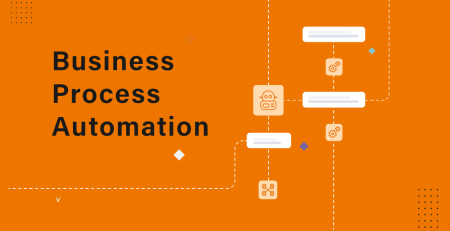Getting Started with Staff Augmentation
In a fast-paced business environment, demand for expert IT services has long outstripped supply. The global talent gap will reach 85.2 million by 2030, making it increasingly difficult to find specialists with the necessary skills, experience, and rates.
As a result, businesses are looking for flexible staffing solutions such as staff augmentation or managed services as alternatives to traditional hiring. If you’ve ever wondered what staff augmentation is and how it differs from managed services, this article is a must-read. We will examine the characteristics of both models and assist you in understanding their differences.
What is a Staff Augmentation?
Remote staff augmentation is a management model used by both startups and large corporations to manage everything from new projects to large-scale maintenance and change. It is a type of contractual outsourcing service designed to supplement the existing in-house team with the outside expertise of an IT staff augmentation provider.
What exactly is staff augmentation? This method allows you to quickly find staff for a specific project that has a staff shortage. As a result, you augment the full-time team by temporarily hiring highly qualified specialists. The model successfully combines the benefits of personnel outsourcing with the convenience of staffing. When a technology company expands, launches larger projects, or is forced to solve multiple important tasks at once, it turns to this service.
The IT staff augmentation model is used for a variety of roles, including R&D, operations, HR, finance, and so on. Even Google, a behemoth in the industry, has launched Kaggle, a freelance network of data scientists. Without a doubt, it is an excellent way to meet the needs of specialists in the shortest amount of time while also reducing costs, which is a welcome bonus in any situation.
Staff Augmentation Benefits
Not surprisingly, resource and staff augmentation has become a significant milestone in the development of technology firms. This business process makes it possible to find even the most sought-after engineering skills, such as cloud computing, blockchain, and artificial intelligence. The model is extremely common–the global talent industry is expected to reach $542.0 billion in 2024, growing at a 2.01 percent annual rate from 2020 to 2024. Are you blown away? Then let’s go over each benefit in greater detail.
Formalities Minimization
Full transfer of responsibility enables you to reduce HR and employment formalities and focus more on the core business. In practice, the outsourcer’s full-time team is supplemented (or entirely made up of) third-party specialists who work on the customer’s premises for the duration of the project. This model is easily scalable—it is far easier to end a partnership than it is to end an employment contract.
Experience Matters
Recruiting trained professionals at the pinnacle of your career will allow you to confidently assign projects and tasks. Mid- and senior-level professionals with experience do not require extensive training or assistance. Assign projects and responsibilities as needed, and a strengthened employee or team can quickly deliver the results you require.
The skills you need the most
Whether you need help with a specific project or your entire business, focusing on the skills will allow you to find effective employees quickly and affordably. You won’t have to hire someone and then hope they have the right experience for the job; instead, you’ll be able to select the right person with the exact skill set you require.
Objective assessments and perspective
Hiring a temporary employee for your company or project allows you to gain an objective perspective and a new perspective on the processes.
Increased flexibility saves time and money
Hiring a temporary worker for projects that require assistance can save you time and money. Using a staffing service can lower your staffing costs because you only pay for the time you work—and you won’t have to worry about downtime or finding a full-time employee when there’s no work to do.
Reduce costs without sacrificing quality
When you have a larger workforce, you can hire a professional without making long-term and costly commitments. Permanent hiring is probably not cost-effective if you only need an employee for a few weeks or months. Even one full-time job will cost you money when you factor in salaries, benefits, and tax deductions.
| Types of Staff Augmentation | Best cases | Pros | Cons |
| Commodity | Non-critical projects when you need to perform the task without a specific skill set. (project work, increased production, spikes in customer demand, seasonal businesses, etc.) | Flexibility The talent pool is bigger Quick hiring Low cost | Talent quality can be inconsistent. |
| Skill-based | Cases where you require certain skills, but the relative skill level is not critical. (facilities setup, brand & logo design, technology setup, etc.) | Flexibility, when you need it most Capacity for longer-term needs | More expensive Talents are usually geographically distributed (remote). |
| Highly-skilled | Projects that should be filled only by known specialists. The level of skills is important. | Flexibility Experience and expertise at a very high level. Fresh ideas and objectivity. Increased speed to market. | High cost It is challenging to find a reliable talent and keep long-term relationships. |
Staff Augmentation is right for you if:
- You already have an in-house team working on your product in your local office, but you’d like to hire a remote team to work on another aspect of it.
- You need to hire a team of several technical specialists, but due to a talent shortage in the local market, this is not possible. You understand that local recruitment will take too long, and that this option is not viable given the risks and high demand in the market.
- You are working on a technical product with a team of programmers and need to hire new engineers. Because the professionals you want to hire are uncommon in your country, you want to broaden your search to include other countries.
- You prefer daily communication with your team and want these professionals to feel like they are a part of your local team. These are critical for integrating the remote unit with the local team and motivating them to work together toward a common goal.
- While recruiting permanent employees, you must hire software developers to meet your short-term needs.
Staff Augmentation Challenges
The model has many advantages, but it also has some drawbacks. Adding new employees means adding another resource to management. While being an expert means they will not require extensive management assistance, you will still need to build additional capacity to handle other personnel.
Another disadvantage of the scale-up model is that external developers typically lack knowledge about your organization, other projects or products, or previous business experience or industry knowledge. As a result, they will be less active and motivated than in-house employees.
Even if your hired staff excels in the technical skills required for the project, you must still invest resources in training them in your company’s internal processes and the ability to adhere to your company’s work culture. That means you may not be able to fully overclock the project right away.
What are Managed IT services?
Managed Services is another “outsourcing” model you should be familiar with, especially since the managed services market is expected to grow to $282.0 billion by 2023. These are any tasks completed by a third party, most commonly in business IT services.
It’s a way to outsource jobs to an expert in order to save money, improve service quality, or free up internal teams to do work that’s important to your company. The staffing firm that provides these services is known as a “managed service provider” (MSP).
Managed services are also known as business-specific consulting assistance. Managed service providers collaborate with the client but do not assume complete control of the project. They assist in more strategic task management while keeping long-term results in mind. The client compensates them for the use of the employees in their projects or longer-term agreements.
The primary reasons a company chooses an MSP are related to cost-effectiveness. The cost of managed services is well-known and easily budgeable. The company does not incur additional costs that are common in the IT industry, where updates, changes, and maintenance can be costly. Employees can be added or removed as needed, giving businesses cost flexibility and the ability to expand easily.
Typically, managed services include:
- Software as a service, or SaaS
- Desktop as a Service (DaaS)
- Cyber Security Service or Managed Security
- Hosting Services
- Hardware as a Service (HaaS)
- Network management
- Identity and Access Management (IDAM).
Managed Services are right for you if:
- Your primary objective is to save time. Hiring a managed service provider in these circumstances means having quick and easy access to expert services that are ready to implement the project within time and budget constraints.
- Non-core aspects of the business, such as marketing or financial management, must be outsourced. That is, you do not need to hire full-time employees or form a team to complete tasks requiring significant resources.
- You need a proactive approach to project management. Engaging an MSP allows you to make well-informed and better project management decisions. By implementing an early warning system, consulting services ensure timely and accurate project execution.
- You need to bring the project to its logical conclusion with no failures. Specialized consulting services come into play with their technical prowess and highly trained professionals that provide companies with much-needed peace of mind and confidence to complete projects.
Managed Services Challenges
Select managed services if you are willing to fully delegate responsibility. You are aware of all potential hazards. You understand how to properly draught contracts in order to avoid being duped by expectations and consequences.
However, because of the risks associated with the process, be prepared to pay more when selecting a manageable capacity for staff augmentation. It is standard procedure, but the cost increases by 30%.
Staff Augmentation vs. Managed Services Models: What Do They Mean?
What is the distinction between staffing and managed services? It is, of course, a responsibility. Are you willing to accept complete responsibility for the outcome, or do you prefer to delegate it? Each model offers the opportunity to grow and reach its full potential.
As part of the staff augmentation model, you retain control over all processes. Managed service providers, on the other hand, assume external control of a customer’s non-core systems, managing all aspects of their operation.
Assume you lack a skilled technical manager and the mere thought of routine management drives you insane. In that case, all you need to do is find a capable, experienced vendor willing to accept responsibility.
Increasing the state allows you to quickly scale certain functions. Managed services, on the other hand, are best suited to long-term infrastructure and security-related processes.
Staff Augmentation vs. Managed services – how to choose?
We’ve prepared four questions for you to answer to help you decide between managed and staff augmentation services.
Do you need a project or operational scalability?
The two models provide different scaling options to accommodate various needs. On the one hand, the additional staff meets the need for an extra pair of hands and is ideal for scaling specific projects. The managed services model is an excellent choice for scaling operations as your company grows. This solution enables businesses to do more while remaining efficient.
Are you looking for a short-term or long-term partnership?
The staff augmentation model is typically used for temporary assignments. And, in most cases, cooperation ends once the project is completed. Businesses, on the other hand, rely on a managed service provider for much longer due to the lengthy business development process of advising and bringing business ideas to life.
What control do you expect to have?
Another distinction is the company’s level of control when collaborating with the provider. In the event of a growth, the client is critical in managing the recruitment and onboarding processes. Managers have complete control over all aspects of the project and can inspect the work performed. The client company only describes the tasks and details for managed services; however, the partner manages everything.
Are your projects classified and related to critical intellectual property?
In such cases, you should carefully consider your decision to increase your headcount. However, the reasoning behind this decision is frequently based on psychological comfort rather than hard evidence. An agreement signed with a contractor is objectively just as reliable as one signed by a staff member. However, when hiring enhanced personnel for top-secret projects, organizations should proceed slowly and cautiously.
What is Software Project Outsourcing?
IT project outsourcing entails collaborating with a software development firm and delegating the project to its software team. This is a more extensive collaboration than a team extension. It also includes services such as analysis and design, UI/UX, quality assurance, project management, and support and maintenance.
And, because the vendor is more involved, the motivation to achieve the best results is greater than with staff augmentation. All of this, combined with the specific benefits of outsourcing, transforms the company into a long-term partner rather than just a temporary service provider.
The outsourcing model is right for you if:
- If you have a project but your team is not meeting the deadline, you will need to delegate responsibility to someone else. The IT company assigns developers and other personnel to you, and you give them instructions on how to manage your project.
- You want to design a product from the ground up. This model assumes that the client has only an idea for a product and hires a development team to make it a reality. In this scenario, the team is usually only concerned with this project. The model has been successfully applied to complex, long-term projects, startups, and innovative products.
- A consultant is required for all aspects of the project, both technical and product-related.
- You want to save money. According to a Statistics Brain survey, 44 percent of American companies chose the project outsourcing model primarily to cut costs. You can empower your team in any market by outsourcing while keeping costs under control.
- This partnership model, of course, is not possible without the involvement of an experienced IT outsourcing firm. After all, creating an excellent product necessitates a wide range of specialized skills.
What is the Difference Between Staff Augmentation and Outsourcing?
IT project outsourcing and managed IT services are terms that are frequently used interchangeably. However, there are some key differences between the models.
The goal of staff augmentation is to add personnel with additional skills that the project requires. With specialist outsourcing, you can have another company complete your entire project. So it’s really about the required skills (hiring a specialist for a set period of time) versus the required tasks (hiring an entire team or company to do it for you).
When a company wants to focus on one core activity without breaking it down into many side processes, the project outsourcing model is ideal. Staff augmentation entails two parallel workflows in which the client works with his team on the key aspects while the outsourcer handles some secondary tasks.
Outsourcing (or a dedicated team) is typically used when a client and a service provider need to collaborate on multiple activities rather than specific projects.
The dedicated team will work independently from your firm and will not be directly involved in any of your other internal development activities or internal programming work. Furthermore, the managed service provider can assume complete control of the project and accountability for its outcomes. As a result, outsourcing can be considered a subset of broadly defined managed IT services.
Why Augment Your Team with Nile Bits
Now that you know which model is best for you, you must find the best staff augmentation or managed services vendor to maximize your benefits. Nile Bits is exactly that. Here are a few reasons why you should choose us over other companies:
- We have over 8 years of experience in software development for industries such as healthcare, retail, FinTech, EduTech and banking. Our company has over 100 employees, with 90% of them being middle and senior-level developers.
- We’ve formed strategic alliances with world-class technology vendors and completed over 200 successful projects with a 98 percent customer retention rate.
- Nile Bits can provide highly skilled software developers and other IT professionals such as UI/UX designers and QA engineers, whether you need a single employee or an entire team.
- Your engineers will be working on your product full-time and will not be distracted by other projects. You’ll manage your developers so that they feel like they’re a part of your core team.
- We provide a mature project manager to assist you in effectively managing your extended team, as well as flexible staffing – you can expand or reduce your remote team at any time. If an issue arises that requires you or your extended team to discuss it, the project manager will assist you in facilitating the process.
- We also follow security standards like ISO and industry certifications like PCI DSS and HIPAA to ensure effective information security and business continuity.
Final Thoughts
In a nutshell, the decision between managed IT services and staff augmentation should be based on business needs, scaling options, length of partnership with the BPO company, and desired level of control.
If you can’t decide which model you need, the best all-around solution is to hire a professional service provider with experience in both models — choose Nile Bits. Contact us, and we will provide your organization with a highly efficient development team.













Leave a Reply